Rhynie
Chert News 23
.
See also "chert
formation".
Image: Evidence
for water turning into chert
[1] R. Rößler, T.
Zierold, F.
Spindler, F. Rudolph : Strandsteine ...
Veröff. Mus. Naturkunde
Chemnitz 30(2007), 5-24.
Flint
formation
"There are always small pores between the individual grains of sand or
chalk. Watery solutions are moving about these cavities." [1]
(For original text
see German
version.) This seemingly plausible statement is to explain the
transport of dissolved SiO2
which finally becomes flint. Here we have the once favourite
idea of substance transport by "circulating solutions", which is
certainly right if there is really a cause driving a flow. Within the
thick deposits of chalk mud on the bottom of the sea floor, however, no
such cause is evident.
It is well known that substances can move without any flow, by
diffusion.
This works even in compacted sediments without any
liquid-filled cavities, along the grain boundaries. This fundamentally
different mode of transport, which easily explains various phenomena,
is found hard to understand by some, and therefore not included into
their considerations so that they have to invent additional assumptions
like liquid flow. In the present case, a written comment provided to
the authors [1] in due time before print had been ignored.
[1] R. Rößler,
T. Zierold, F.
Spindler, F. Rudolph :
Strandsteine ...
Veröff. Mus. Naturkunde
Chemnitz 30(2007), 5-24.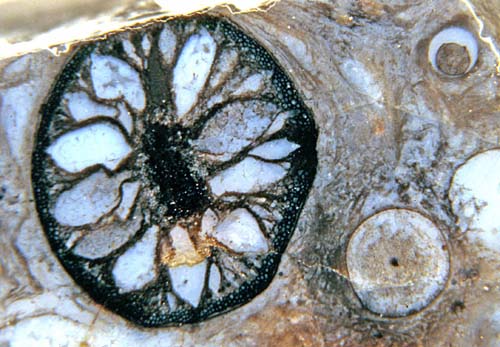
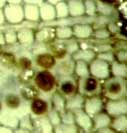

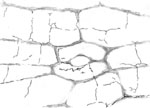
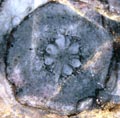
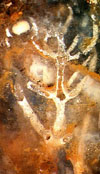 Therefore
it is deplorable that a publication of the Naturkunde-Museum
Chemnitz describes chert formation in a way that does not apply to the
cherts of highest scientific interest: "Cherts ... are phenomena which
formed only after deposition of the surrounding rocks. Silica gel
cements or partially displaces the rock ..." [1]. (For original text
see German
version.) The authors should have known better: All chert
samples presented at the yearly Chert Workshop at the Naturkunde-Museum
Chemnitz, also those described at www.kieseltorf.de and
www.chertnews.de,
formed in other ways, by silicification of peat, mud, or water.
Therefore
it is deplorable that a publication of the Naturkunde-Museum
Chemnitz describes chert formation in a way that does not apply to the
cherts of highest scientific interest: "Cherts ... are phenomena which
formed only after deposition of the surrounding rocks. Silica gel
cements or partially displaces the rock ..." [1]. (For original text
see German
version.) The authors should have known better: All chert
samples presented at the yearly Chert Workshop at the Naturkunde-Museum
Chemnitz, also those described at www.kieseltorf.de and
www.chertnews.de,
formed in other ways, by silicification of peat, mud, or water.

